Living Legacy: A Brief Survey of Literature on Dr Goh Keng Swee
Senior Librarian Timothy Pwee provides a starting point for researchers seeking to understand the legacy of Goh Keng Swee by presenting this survey of resources available at the Lee Kong Chian Reference Library.
— Goh Keng Swee, “My Ambitions”, 1931
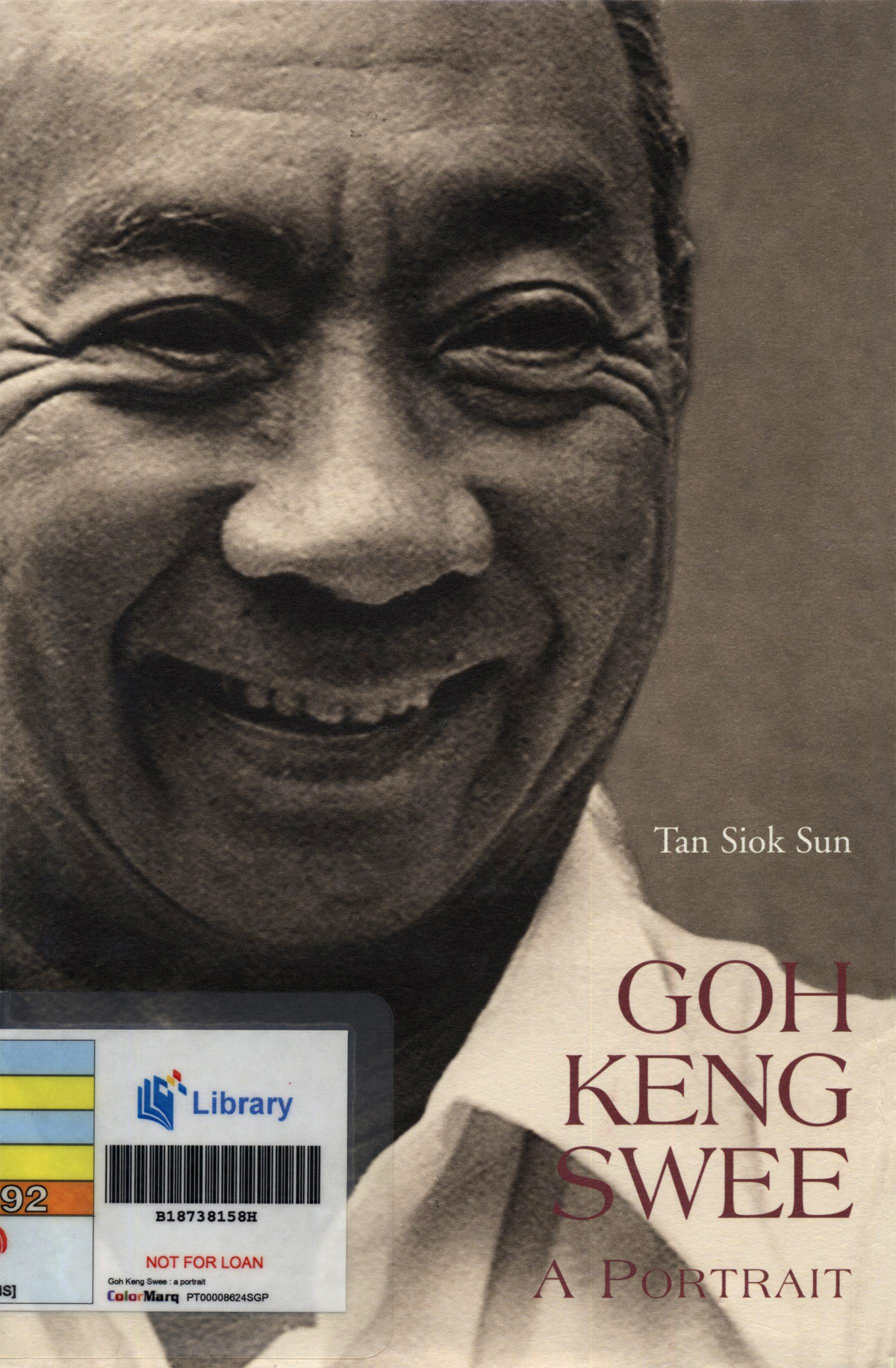
The passing of Goh Keng Swee has sparked renewed interest in the wealth of literature on this renaissance man.
Life and Times
To begin with, a person’s autobiography would be the obvious place to look for information about a person, or failing that, a biography. In Goh Keng Swee’s case, although he declined to write his memoirs, his daughter-in-law, Tan Siok Sun, published a biography of him, Goh Keng Swee: A Portrait, back in 2007. Tan’s work is a sprinkling of personal vignettes blended into a narrative tracking Goh’s career as drawn largely from published sources. This is in contrast with the more journalistic style employed by Asad-ul Iqbal Latif in his 2009 biography of Lim Kim San and, on the other end of the spectrum, Joan Hon’s intensely personal 1984 account of her father, Hon Sui Sen.
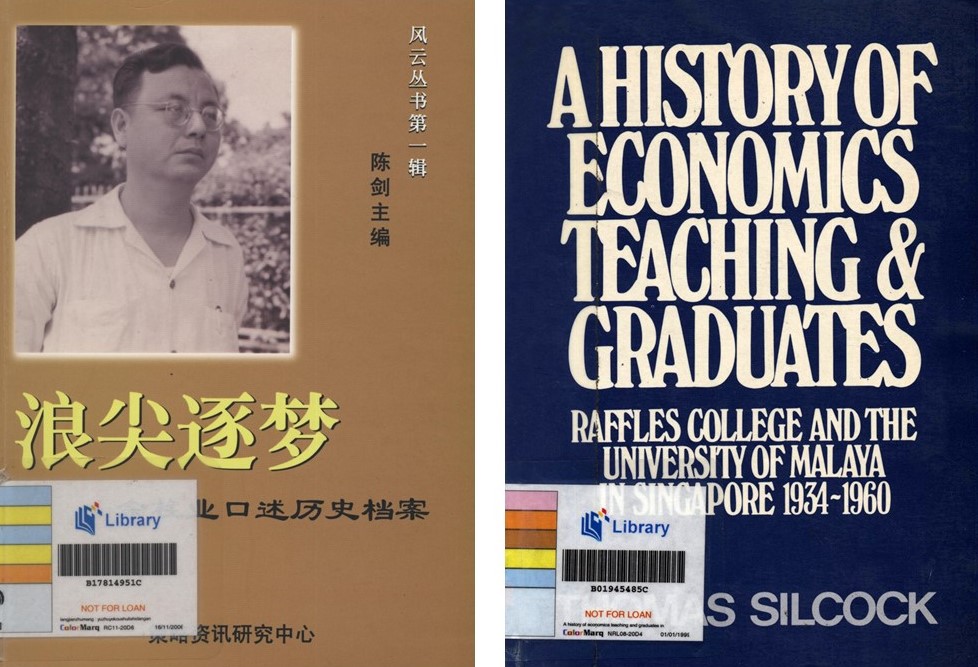
Another source would be the memoirs or biographies of colleagues and subordinates that mention their relationship with Goh. For instance, Lee Kuan Yew’s The Singapore Story, Ngiam’s A Mandarin and the Making of Public Policy, Silcock’s A History of Economics Teaching & Graduates or the recorded memories of opponents like his friend Eu Chooi Yip: 浪尖逐梦: 余柱业口述历史档案 (2006).
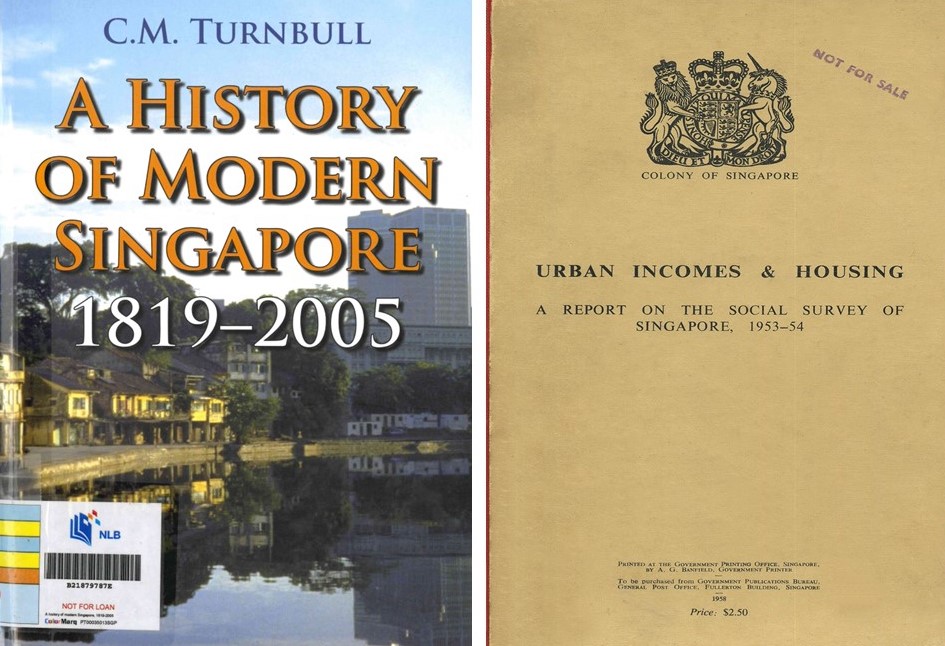
Virtually all histories of postwar Singapore would mention Goh’s role in the development of Singapore’s economy and many would also cover his development of the Singapore Armed Forces. For instance, Edwin Lee’s Singapore: The Unexpected Nation (2008) or Turnbull’s A History of Modern Singapore, 1819–2005 (3rd ed., 2009). Many works about postwar Singapore, especially those dealing with Singapore’s economic development, mention Goh’s role as economic architect. Interestingly enough, one of the compilations about Singapore’s leaders made history in its own right: Melanie Chew’s Leaders of Singapore (1996), which contains the account of her interview with Goh. In this significant account, Goh revealed to her that the separation from the Federation of Malaysia was not initiated by Malaysia as was conventionally believed at the time (p. 147).
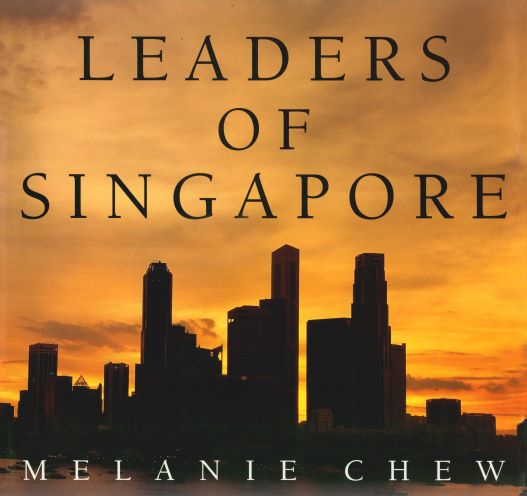
For those interested in vignettes of Goh, a good place to look happens to be the various commemorative volumes published by the different organisations Goh touched. A good example of this would be the civil service’s commemorative volume, Pioneers Once More in which Philip Yeo mentions that Goh, his superior, actually drafted a policy memo for him (Chua, 2010). ST Engineering’s UnChartered Territory includes a section by Lai Chun Loong (Kuah, pp. 53–59), better known as the junior engineer who was summoned by Goh to strip down an M16 rifle and separate locally manufactured from imported parts. On a different note, the recently published book on the PAP, Men in White, gives a dramatisation of the founding of the Malayan Forum.
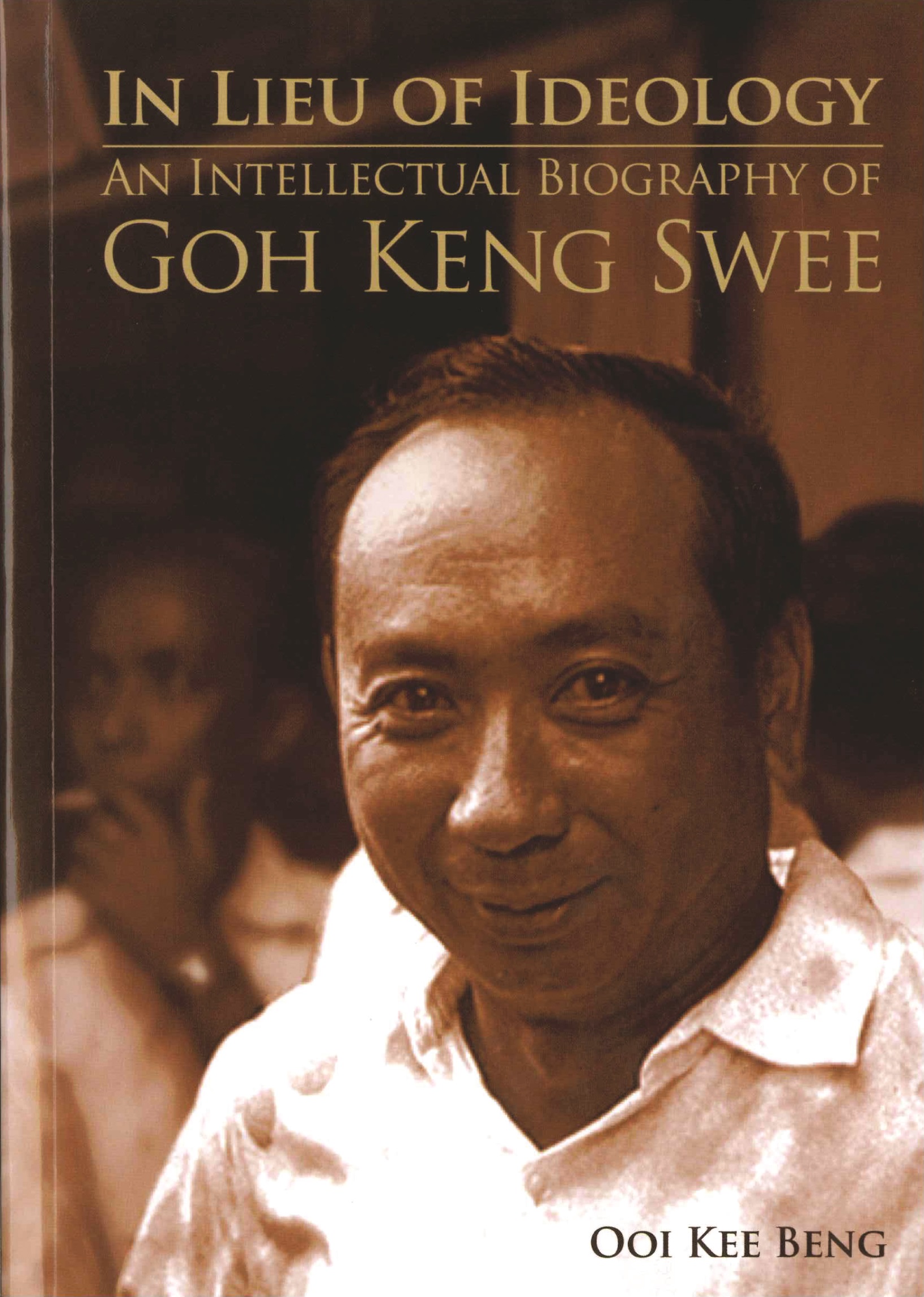
The study of Goh’s ideas has just begun. One book-length work specifically on Dr Goh’s ideas is Austin’s Goh Keng Swee and Southeast Asian Governance. More comprehensive is the recent book by Ooi Kee Beng, commissioned by the Institute of Southeast Asian Studies, In Lieu of Ideology (2010). An early work examining Dr Goh’s policies was published in 1964, regarding the development of Jurong Industrial Estate: Go-ahead at Goh’s Folly: Singapore’s Gamble with Industrial Expansion.
Speeches and Papers
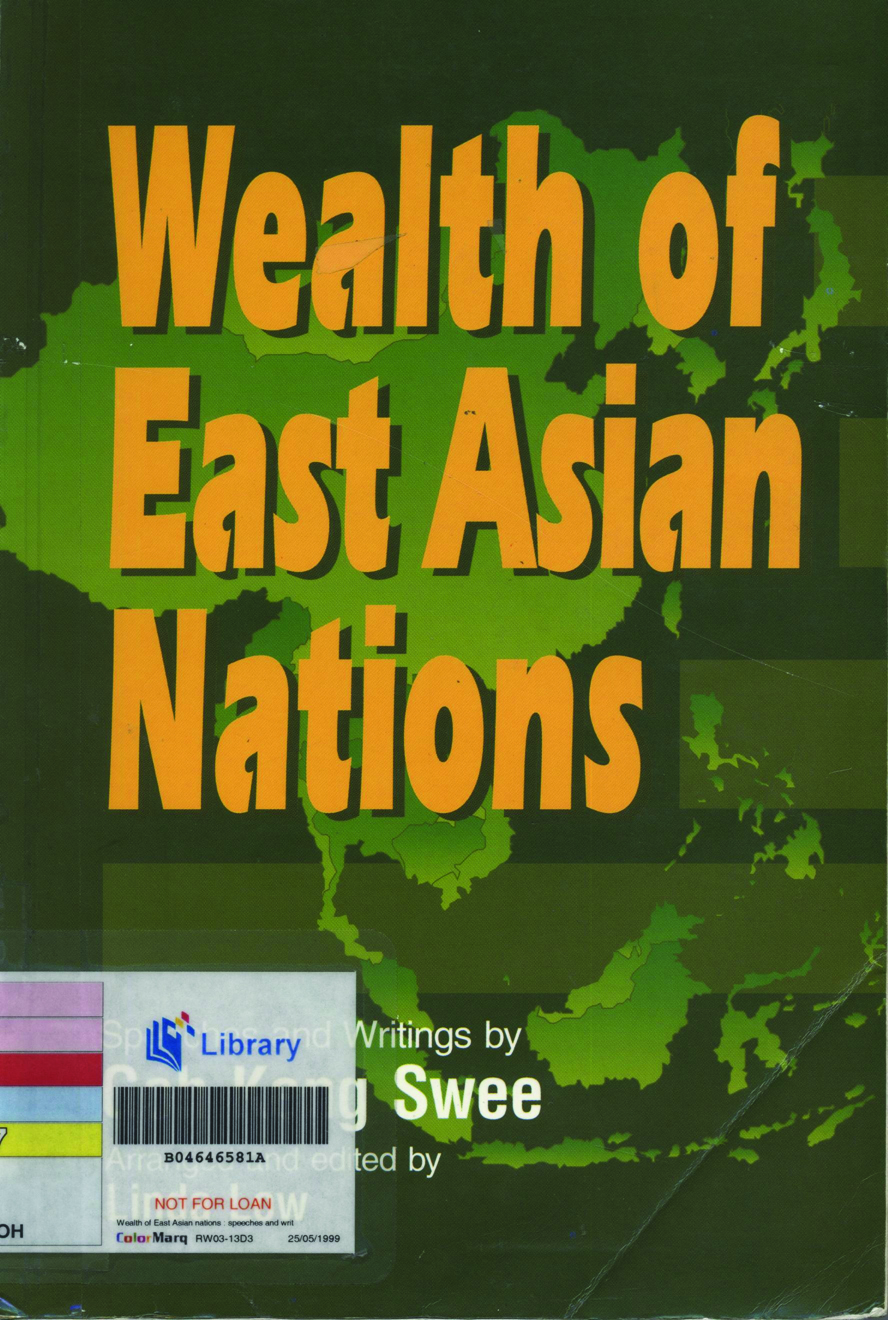
Turning to Goh’s personal philosophy and thoughts, we can leaf through the various speeches and papers he presented over the decades. Of obvious importance would be the three published compilations, two compiled by him (The Economics of Modernization [1972] and The Practice of Economic Growth [1977]), and one compiled and edited by academic Linda Low (Wealth of East Asian Nations [1995]). Here one can find a general survey of the depth and breadth of his thoughts on topics ranging from communism and economic growth, to education and building up the Singapore Armed Forces. In fact, his preface to The Economics of Modernization was used three decades later in 2008 by the then Executive Director of Temasek Holdings, Simon Israel, to explain the core philosophy of Temasek Holdings to an American Congressional Committee:
The writing style of The Economics of Modernization also happens to be the most personable of the three works, perhaps because it is largely from the 1960s, when he was still largely addressing lay audiences. The second volume, The Practice of Economic Growth, is from the mid-70s when he was Minister for Defence while the last volume covers the late 70s to the early 90s.
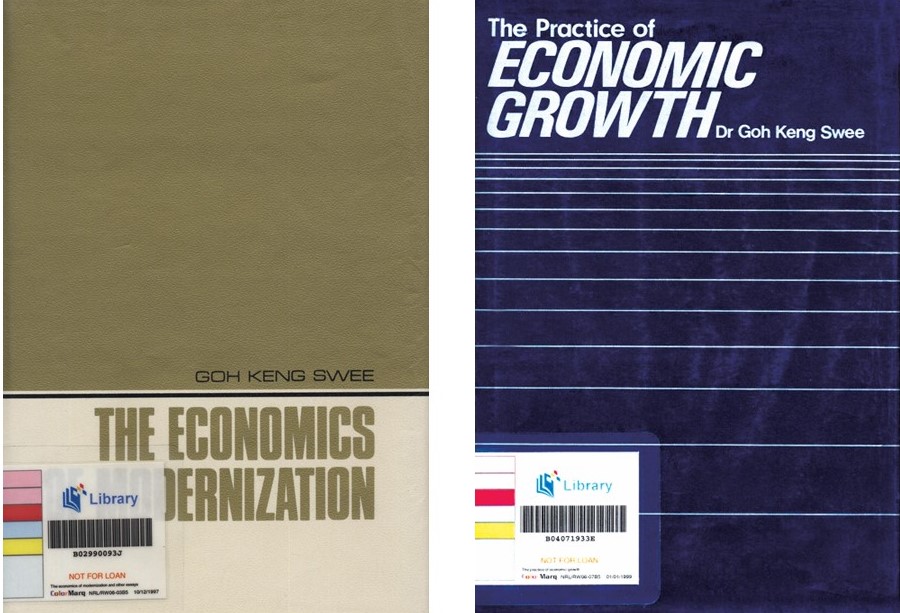
Goh’s first official report, Urban Incomes & Housing (1956), was completed while he was working in the Social Welfare Department. His next was a People’s Action Party policy document: The Tasks Ahead: P.A.P.’s Five-Year Plan, 1959–1964 (1959). Another significant report written by him is the Report on the Ministry of Education 1978. There are many more reports Goh commissioned, such as the Report on Moral Education 1979 whose committee was headed by Ong Teng Cheong, or the 1947 A Social Survey of Singapore on which he was a committee member.
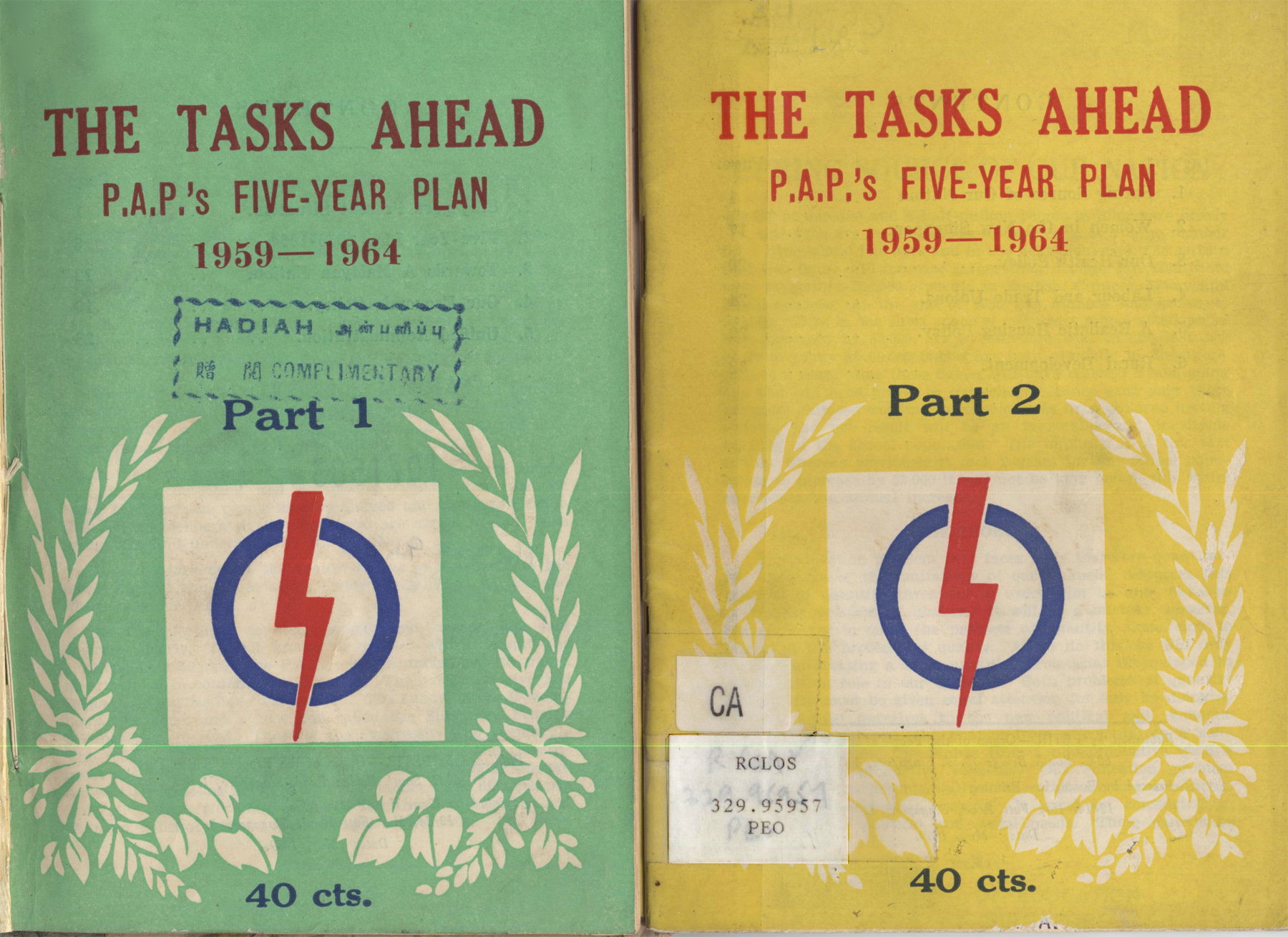
Those interested in tracing the early developments in Goh’s life can look to The Economic Front, published in 1940 just before the Japanese invasion of Malaya. This was his first academic paper (Silcock, p. 39). Another notable piece is his 1956 London School of Economics PhD thesis, Techniques of National Income Estimation in Underdeveloped Territories, with Special Reference to Asia and Africa. Though the original is owned by the London School of Economics, a microfilm copy resides with the National University of Singapore Library.
However, the earliest known published work by Goh comes from an earlier time: a simple essay written when he was a Standard Five Anglo-Chinese School student who wanted nothing more than “to become an engineer” because “China needs engineers, scientists, inventors and sailors badly… to help her become one of the best nations in the world” (Goh, 1931).
Many of Goh’s other speeches and papers can be found on the National Archives’ website. Significant speeches have been published separately as is the case with many budget speeches such as his 1960 speech, descriptively titled This is How Your Money Is Spent; or the government publication, Speeches: A Monthly Collection of Ministerial Speeches. His speeches in Parliament can be found within the voluminous official Parliamentary record: Parliamentary Debates Singapore: Official Record. One of his most interesting speeches in the Debates was made on 13 March 1967 during the second reading of the 1967 bill making National Service compulsory. Unfortunately, a search of these sources has not yet uncovered the paper Noah’s Ark Progresses Through the SAF, referred to by Prime Minister Lee Hsien Loong in his eulogy at Goh’s state funeral on 23 May 2010 (Lee, 2010).
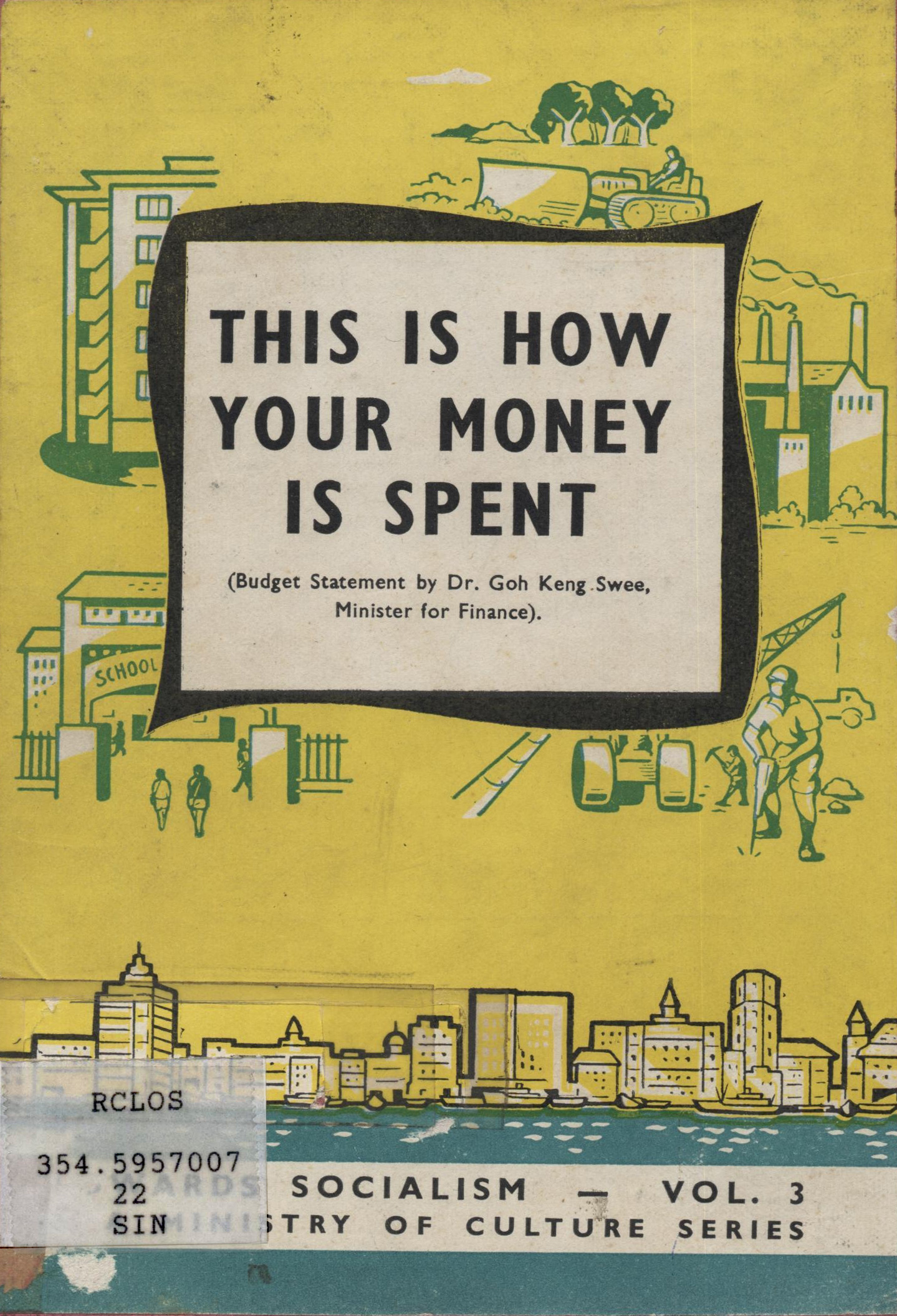
Finally, yet another significant source of information is the newspapers. The most convenient and accessible source of these happens to be The Straits Times as it has been digitised and put online by the National Library at the NewspaperSG (https://eresources.nlb.gov.sg/newspapers/) website. However, NewspaperSG coverage ends in 2006, and the two-week outpouring of news articles in The Straits Times starting with Goh’s passing on 14 May 2010 is not yet available. For that, one can either use the National Library’s microfilm record of the newspapers or depend on the Factiva news database. Factiva is also useful for locating articles published in the foreign press over the past two to three decades.
It is hoped that this brief survey of published material on Goh will prove a useful starting point for researchers seeking to comprehend his legacy.
The author wishes to acknowledge the contributions of Azizah Sidek, Principal Librarian, National Library, in reviewing this article.
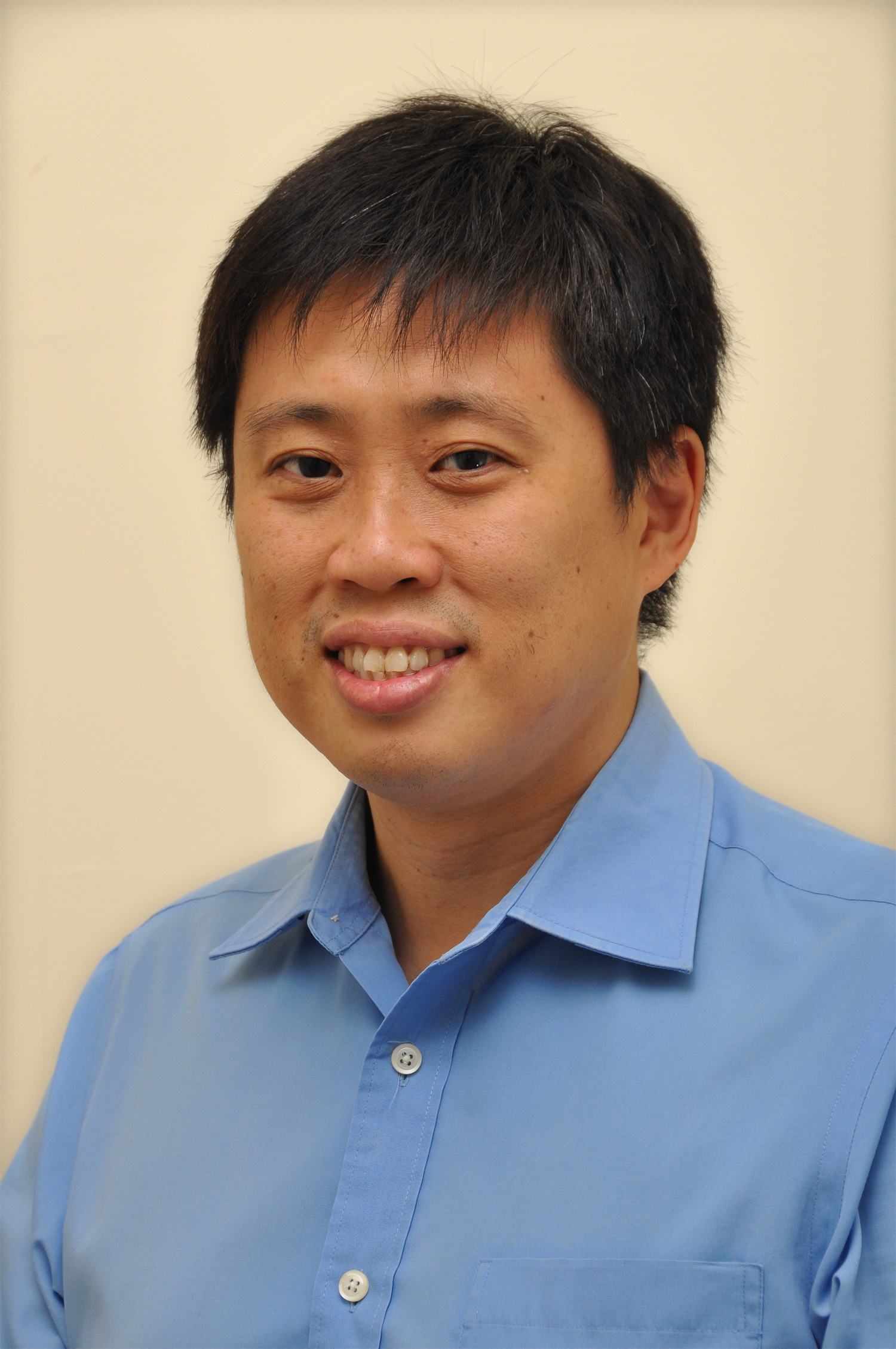
Senior Librarian
Lee Kong Chian Reference Library
National Library
REFERENCES
Adrian Kuah, Unchartered Territory: Goh Keng Swee and the ST Engineering Story (Singapore: ST Engineering, 2007). (Call no. RSING 338.7623095957 KUA)
Asad-ul Iqbal Latiff, Lim Kim San: A Builder of Singapore (Singapore: Institute of Southeast Asian Studies, 2009). (Call no. RSING 363.585092 ASA)
C. M. Turnbull, A History of Modern Singapore, 1819–2005 (Singapore: NUS Press, 2009). (Call no. RSING 959.57 TUR)
Chen Jian 陈.剑, Lang jian zhu meng: Yuzhuye koushu lishi dang’an 浪尖逐梦 : 余柱业口述历史档案 [Chasing dreams on the top of the waves: Yu Zhuye oral history archives] (Petaling Jaya: 策略资讯研究中心, 2008). (Call no. Chinese RSING 959.5704 LJZ)
Chua Mui Hoong, _Pioneers Once More: The Singapore Public Service 1959–_2009 (Singapore: Public Service Division & Straits Times Press, 2010). (Call no. RSING 351.5957 CHU)
Colin Campbell, “Singapore Plans to Revive Study of Confucianism,” New York Times, 20 May 1982. Retrieved from Factiva via NLB’s eResources website.
“CQ Transcriptions,” Congressional Testimony, 5 March 2008. Retrieved from Factiva via NLB’s eResources website.
“Dr Goh on ‘Secret’ Visit to Israel,” Straits Times, 30 January 1959, 4. (From NewspaperSG)
Edwin Lee, Singapore: The Unexpected Nation (Singapore: Institute of Southeast Asian Studies, 2008). (Call no. RSING 959.57 LEE)
Goh Keng Swee, Wealth of East Asian Nations: Speeches and Writings (Singapore: Federal Publications, 1995). (Call no. RSING 330.95957 GOH)
Goh Keng Swee, The Practice of Economic Growth (Singapore: Federal Publications, 1977). (Call no. RSING 330.95957 GOH)
Goh Keng Swee, The Economics of Modernization and Other Essays (Singapore: Asia Pacific Press, 1972). (Call no. RSING 330.95957 GOH)
Goh Keng Swee, National Service (Amendment) Bill, vol. 25 of Parliamentary Debates: Official Report, 13 March 1967, cols. 1158–65. (Call no. RSING 328.5957 SIN)
Goh Keng Swee, This Is How Your Money Is Spent (Singapore: Ministry of Finance, 1960). (Call no. RCLOS 354.595700722 SIN)
Goh Keng Swee, Urban Incomes & Housing: A Report on the Social Survey of Singapore (Singapore: Department of Social Welfare, 1956). (Call no. RCLOS 309.15957 GOH)
Goh Keng Swee, The Economic Front: From a Malayan Point of View (Singapore: Government Printers, 1940). (Call no. RRARE 330.19355 GOH; microfilm NL9715
Goh Keng Swee, “My Ambitions,” The ACS magazine, 6, no. 1 (June 1931), 55. (Microfilm NL7044)
Goh Keng Swee and The Education Study Team, Report on the Ministry of Education 1978 (Singapore: Education Team, 1979). (Call no. RCLOS 370.95957 SIN)
Ian Patrick Austin, Goh Keng Swee and Southeast Asian Governance (Singapore: Marshall Cavendish Academic, 2004). (Call no. RSING 338.95957 AUS)
Joan Hon, Relatively Speaking (Singapore: Times Books International, 1984). (Call no. RSING 320.95957 HON)
Lam Peng Er and Kevin Y.L. Tan, eds., Lee’s Lieutenants: Singapore’s Old Guard (N.S.W.: Allen & Unwin, 1999). (Call no. RSING 320.95957 LEE)
Lee Hsien Loong, “The State Funeral Service for the Late Dr Goh Keng Swee, speech, Singapore Conference Hall, 23 May 2010, transcript, Ministry of Information, Communications and the Arts. (From National Archives of Singapore document no. 20100530001)
Melanie Chew, “Goh Keng Swee,” in Leaders of Singapore (Singapore: Resource Press, 1996), 141–50. (Call no. RSING 920.05957 CHE)
Ministry of Culture, Singapore, Speeches: A Monthly Collection of Ministerial Speeches (Singapore: Publicity Division, Ministry of Culture & Information Division, Ministry of Communications & Information, 1977–2002). (Call no. RSING 354.5957035 S)
Ooi Kee Beng, “Dr Goh, The Pragmatic Intellectual,” Straits Times, 17 May 2010, 6. (From NewspaperSG)
People’s Action Party, The Tasks Ahead: PAP’s Five-Year Plan, 1959–1964 (Singapore: Petir, 1959). (Call no. RCLOS 329.95957 PEO)
Shailaja Nair, The Master Sculptor: Goh Keng Swee (Singapore: SNP Editions, 2009). (Call no. RSING 959.5705092 NAI)
Sonny Yap, Richard Lim and Leong Weng Kam, Men in White: The Untold Story of Singapore’s Ruling Political Party (Singapore: Straits Times Press, 2010). (Call no. RSING 324.25957 YAP)
Tan Siok Sun, Goh Keng Swee: A Portrait (Singapore: Editions Didier Miller, 2007). (Call no. RSING 959.5704092 TAN)
Thomas Silcock, A History of Economics Teaching & Graduates: Raffles College and the University of Malaya in Singapore 1935–1960 (Singapore: Department of Economics & Statistics, National University of Singapore, 1985). (Call no. RSING 378.5957 SIL)
Willard A. Hanna, Go-Ahead at Goh’s Folly: Singapore’s Gamble With Industrial Expansion (New York: American Universities Field Staff Inc., 1964). (Call no. RCLOS 338.95951 HAN)

